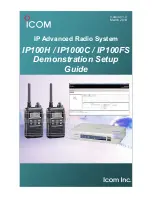
upper one be recorded. The wavelength in meters and the frequency in kilocycles
at which the various stations operate are published frequently in the daily papers
and the Radio magazines.
NOTE
:—
These records must be made in pencil as they are subject to change, and ink
cannot be erased from the card.
MAINTENANCE
Should any trouble develop in the use of Radiola 26, it will in all
probability be due to loss of life or misuse of the Radiotrons or to the exhaustion
of the batteries. As the batteries grow old, they decrease in voltage and increase
in resistance.
Radiotrons.
When not mistreated the six Radiotrons last tor many months.
They may be seriously damaged or their normally long useful life terminated as
follows:
A—By mechanical injury such as dropping or severely jarring
the Radiotron causing a displacement of the internal elements, or
breakage of the filament.
B—By electrical injury caused either by advancing the "Battery" setting
control further in a clockwise direction than is necessitated by the
condition of the "A" battery, or by accidental contact of the filament
with the "B‖ battery voltage.
With the filaments burning too brightly ("Battery" setting-knob too close to
10), the active material in the filaments is rapidly driven off, and the useful life
of the Radiotrons and batteries is shortened. Should this occur, the Radiotrons
may be restored, provided they have not been too seriously abused.
This process of "reactivation" as it is called, may be accomplished
by turning the "Volume" control knob to 10, and the "Battery" setting knob to
6.5 with fresh "A" batteries, and by removing the,"+45B" and "+90B" plate or
"B" battery leads in the battery compartment used. Keep the Radiotrons
lighted for about thirty minutes, replace the connectors, and then try tuning.
Filament or "A" Battery.
When the "A" battery dry cells become discharged
to the point where they will no longer heat the filaments of the six Radiotrons to
the proper temperature, they should be replaced by new ones. The old ones are of
no value and should be discarded. The three dry cells provided in Radiola 26 for
portable use will give about one-half the operating
(14)







































